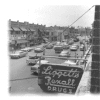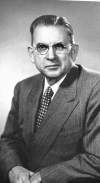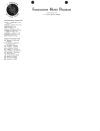Becoming the Framingham Study 1947-1950
- PMID: 15798116
- PMCID: PMC1449227
- DOI: 10.2105/AJPH.2003.026419
Becoming the Framingham Study 1947-1950
Abstract
In the epidemiological imagination, the Framingham Heart Study has attained iconic status, both as the prototype of the cohort study and as a result of its scientific success. When the Public Health Service launched the study in 1947, epidemiological knowledge of coronary heart disease was poor, and epidemiology primarily involved the study of infectious disease. In constructing their investigation, Framingham's initiators had to invent new approaches to epidemiological research. These scientific goals were heavily influenced by the contending institutional and personal interests buffeting the study. The study passed through vicissitudes and stages during its earliest years as its organizers grappled to define its relationship to medicine, epidemiology, and the local community.
Figures





References
-
- Aronowitz R. The social construction of coronary heart disease risk factors. In: Aronowitz R. Making Sense of Illness: Science, Society and Disease. New York, NY: Cambridge University Press; 1998:111–144.
-
- Dawber TR. The Framingham Study: The Epidemiology of Atherosclerotic Disease. Cambridge, Mass: Harvard University Press; 1980.
-
- Rothstein W. Public Health and the Risk Factor: A History of an Uneven Medical Revolution. Rochester, NY: University of Rochester Press; 2003.
-
- Kannel W, Dawber T, Kagen A, et al. Factors of risk in the development of coronary heart disease—six-year follow-up experience, the Framingham study. Ann Intern Med. 1961;55:33–48. - PubMed
-
- Keys A, Taylor HL, Blackburn H, et al. Coronary heart disease among Minnesota business and professional men followed fifteen years. Circulation. 1963;28:381–395. - PubMed
Publication types
MeSH terms
Grants and funding
LinkOut - more resources
Full Text Sources

